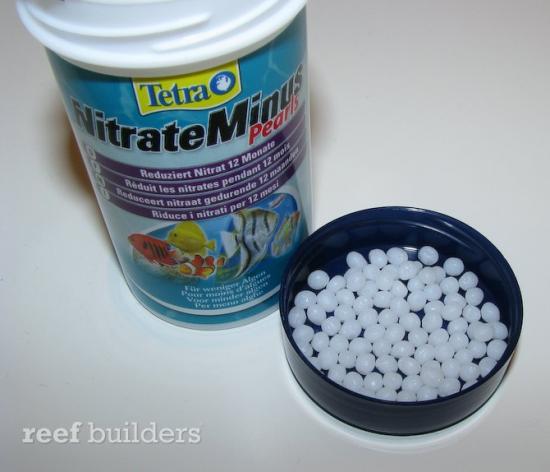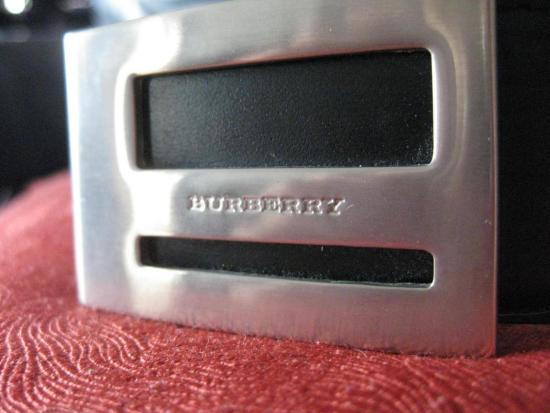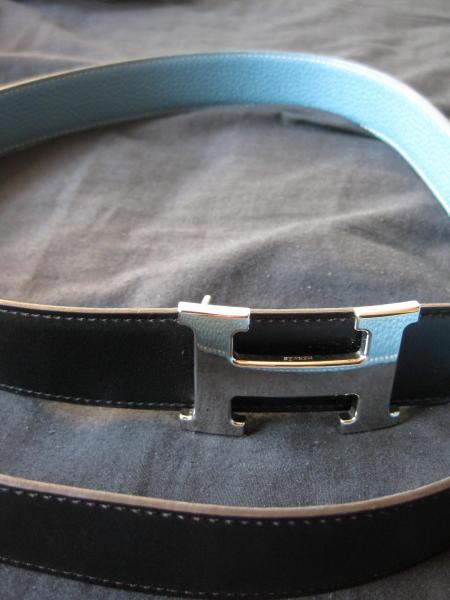
RushAct
-
Posts
347 -
Joined
-
Last visited
-
Days Won
1
Content Type
Profiles
Forums
Gallery
Posts posted by RushAct
-
-
bro, how old?
-
so lucky to actually keep a mandrian fish in such a small fish tank.. any fish tank for that matter.
anyway if run out of pods can go fish farm and buy live pods
good luck!
-
mandarin fish feeding?
-
looking at your zoa, i dont think you got enough light
-
you need to buy Test Kits =)
-
-
Any broa know Where can I find emerald crab or Scarlett hermit?
btw its not reef safe
-
thanks for the replies, guess there is no reason to get a IOS.
-
is that red slim and brown algae covering some of your gsp?
-
uuuuuuuuuuuuuuuuuuuuup
-
Hello bros, anyone can point out the pros and cons for both overflow system?
Thank you very much
-
i like those huge colonies looks great man..
-
you should only connect the key equipment that uses the least wattage to your UPS, eg wave maker
yea, maybe just wave maker and a air stone not power back the whole system.
-
Hi bro, you reckon the power tripped for how long till you reset?
I assumed you staying alone? (from your description).
A good UPS may only have sufficient power to last you max 1 hr, sometimes even much shorter. I have seen huge UPS in server rooms, rated to provide power up to 10 hours. However the size of this unit is as big as a regular 3' tank with cabinet setup. Normally we don't have this luxury, nor pockets deep enough to have this at home, dedicated for our fish tank.
If there is no warning systems (human or via other remote devices), having a UPS can only buy you this much time.
Sorry don't mean to overthrow your theory of the necessity of an UPS, but I feel that the livestocks have the capacity to survive at least 2-4 hrs without electricity to the equipment we have in the aquarium. As long as we can get power back to the system within this time frame, we should not see casualties. So the short supply of electricity an UPS provides is still insufficient if we cannot reset power within the few hours.
My 2 cents.
No worries man.. thanks for educating me.
-
Hi bros, just wanted to share a few things with you guys today.
Today was just another routine weekend, go out and drink have supper then it started raining heavily.
After the rain i got home and realized my power tripped so i just walk to my store room and turn it back on, feeling my way around taking my time, didnt thot much about it UNTIL I WALKED INTO MY ROOM!
I saw my pair of clown fish "resting" on my sand bed straight away i can tell they were dying!
Thank God i decomm my 4ft tank already, if not i might lose my LS and corals.
From this exp, I realized that having a UPS is very important, esp in large fish tanks.. because you will never know when your power will trip esp at night while youre sleeping.
So for those with large fish tanks, do consider having a UPS for your tanks. Its having to spend a little to save you from heart aches.
I hope im not making myself look silly
PS: my Pair clown fish are doing well now and doing their thing
 and... i not trying to sell any UPS here. haha
and... i not trying to sell any UPS here. haha -
Most welcome guys just trying to chip in, no I didn't purchase the book, this chapter is free. Glad you guys enjoyed it.
-
hey bros, saw this online and just wanted to share this with yall. its by Mrsaltwatertank.
This direct link is here http://www.mrsaltwatertank.com/wp-content/uploads/2012/05/NNG_Algae_Excerpt.pdf
Algae, just like any living organisms, need certain things to grow. To be more specific,
algae need four main components to grow:
light
carbon
nitrogen
phosphate
Besides light, we’re going to make the assertion that phosphate is the most important
building block of algae.
The reason we’re making this assertion is that phosphates have the most potential to build
up in your saltwater tank. And phosphate is the building block of algae that is most
easily targeted by you as a saltwater tank owner.
NOTE:
Light is by far the easiest building block of algae to manage. Just flip a switch
and you can turn light on/off. However, no one wants to stare at a dark saltwater tank all
day! On top of that fact, if you want to keep corals in your tank, the corals need light so
having no light over your tank isn’t an option!
So while light is the easiest to manage, you’re not going to keep your lights off all the
time. Focusing on controlling light, to therefore control algae, isn’t worth much effort.
That brings us back to phosphates.
Think about how many times you’ve heard people talk about keeping your phosphates
low in your tank. Mr. Saltwater Tank even made two whole Mr. Saltwater Tank TV
shows on it! Then go look at all the various phosphate-removing medias on the market.
Any local fish store or online retailer will have several offerings for products that claim
to remove phosphates from your tank. It seems that everyone is phosphate crazy!
Why is everyone so phosphate crazy? To understand why, you have to first understand
more about phosphates.
Phosphates 101
In your saltwater tank, phosphates mainly occur in 2 main forms:
- Soluble Reactive Phosphates (SRP)
- Organic Phosphates
The No-Nonsense Guide to Preventing and Curing Nuisance Algae Outbreaks
9 |
P a g e
Soluble reactive phosphates are also known as orthophosphates and to keep things easy,
we’ll refer to them as SRPs throughout the rest of this guide.
SRP is an inorganic form of phosphate. In everyday language, that means that SRP is a
simple form of phosphate that is dissolved in your tank’s water and easily used by algae
and bacteria. While this might be the first time you’ve heard of SRPs, you’ve actually
been giving SRPs a lot of attention!
You’re probably saying to yourself,
“When in the heck have I ever paid attention to SRPs?!”
Here’s when:
Whenever you run a phosphate test on your tank, you are measuring SRPs.
In fact, without really expensive scientific gear, SRPs are the only phosphates you can
measure in your tank.
Therefore, given that SRPs are used by algae and are the only kind you can easily
measure, it makes sense that you and everyone else give them so much attention! They
are the source of all your algae problems…right?
Wrong.
We hate to be the bearer of bad news, but we have to tell you that SRPs may account for
less than 2% of all the phosphates in your tank. That means you are giving a lot of
attention to something that isn’t overly prevalent in your tank!
SRPs are important however, and we’ll dive more into them in a later chapter. For now,
understand what they are – phosphates that are dissolved in your tank’s water - and that
you’ve only been testing for SRPs when you run a phosphate test.
The other main form of phosphates in your tank is organic phosphates.
Organic Phosphates
Organic phosphates are phosphates that are bound to
or incorporated in organic material, instead of being
soluble in the water like the SRPs. Imagine a brick
wall that is made up of lots of red bricks and just a
few green bricks. The green bricks are phosphates
and the red bricks are organic matter. So as long as
the green bricks are part of the brick wall, they are
bound to the red bricks and can’t be easily removed.
If we told you to remove a single green brick, you’d
Figure 2 Organic Phosphates
The No-Nonsense Guide to Preventing and Curing Nuisance Algae Outbreaks
10 |
P a g e
have to do a lot of work to extract just one green brick.
That means organic phosphates are more complex and harder to breakdown than SRPs, as
the organic phosphates first have to be removed from the organic matter (in our case, the
brick wall) before they can be removed from your tank. Also, since organic phosphates
are part of the organic material, that means you can’t test for them in your tank because
your test kit only measures phosphates dissolved in your tank’s water (hint: SRPs). Given
that fact, you now understand why your phosphate test kit only measures SRPs! This fact
also shows you that counting on your test kit as an overall measure of phosphates in your
tank is horribly inaccurate.
You can measure organic phosphates, but not without really expensive and fancy
equipment that most aquarists don’t have and likely won’t be willing to purchase.
We’ll come back to organic phosphates later. For now, know that they are much more
prevalent than SRPs, and that you can’t easily test for organic phosphates.
Phosphates: I’m a big P and you can’t ignore me
Make no mistake, phosphates cannot be ignored in a saltwater tank, especially when it
comes to battling nuisance algae. If you have phosphates, you’ve something that algae
need (and badly want) to grow. No wonder everyone is phosphate crazy!
Can we really blame them though? Nuisance algae are just what the name says – a
nuisance. It looks horrible even though your non-saltwater tank friends will look at your
algae-infested tank and say, “It’s so pretty!”
As saltwater tank hobbyists, we hate nuisance algae and phosphates and we’ll go to great
lengths to keep them out of our tanks. However, the thought of never having any
phosphates in your tank is futile.
The tank is closed, so how did all this phosphate get in here?!
One of the most frustrating parts of owning a saltwater tank is wondering how things like
algae can suddenly appear in your tank when you didn’t deliberately put them in there.
Phosphates seem to fall into the same category: One day you have zero phosphates in
your tank, and the next day,
“WHAM!”
Phosphates show up!
So where did they come from if you aren’t dosing phosphates?
The answer:
lots of places.
The No-Nonsense Guide to Preventing and Curing Nuisance Algae Outbreaks
11 |
P a g e
Phosphates Source #1: Fish Food
Any fish food will contain phosphates. And that’s not a bad thing. Your fish need
phosphates as part of their diet, so a fish food containing phosphates is doing its job.
The problem occurs when you feed so much food that your fish can’t eat it all. When
your fish don’t eat the food, it begins to break down in your tank, which can drive up
phosphate levels as well as nitrate levels. If you feed frequently, then you have a
constant source of phosphates going into your tank. Since your tank is a closed system
(nothing gets in or out of it unless you put it in, or take it out), the phosphates will
continue to build unless you do a water change, adding phosphate-removing media, or
algae start to grow and consume the phosphates.
We’re not encouraging you to NOT feed your fish. We just want you to be aware that
fish food is a double-edged sword. Your fish need food, and overloading your tank with
it is bad.
Add in the potentially tank-trashing activities such as feeding corals or dosing your tank
with phytoplankton, and you’ve got even more phosphates to go around.
Phosphates Source #2: Water
Tap water can contain phosphates and yes, you have to fill your tank with water
somehow. How do you remove phosphates from the water going into your tank?
The answer: You purify it with a Reverse Osmosis and DeIonization (RODI) filter.
Properly purified RODI water will contain zero phosphates, which means every time you
do a water change, or top off your tank to replace evaporated water, you won’t be
dumping phosphates into your tank. Remember that you are dealing with a closed
system, so if you are constantly putting in tap water with high phosphates, these
phosphates will build up in your tank and cause issues like algae outbreaks.
Phosphates Source #3: Bad Rock
As mentioned before, organic phosphates are phosphates locked in organic matter, and
one of the biggest sources of organic matter in your tank is your live rock.
NOTE:
Before someone draws a conclusion from the above statement, we’re NOT
saying the presence of organic matter means you have organic phosphates.
Due to its highly organic nature, live rock can be a great harbor for phosphates. Take for
example, rock that was in a tank that had persistently high phosphates. These phosphates
were likely used by algae in the tank; the excess phosphates had to go somewhere and the
rock made for a great home. Over time, the amount of phosphates in the rock increased
The No-Nonsense Guide to Preventing and Curing Nuisance Algae Outbreaks
12 |
P a g e
and when this rock is placed in a low-phosphate environment (i.e. your tank if you do
what we tell you to), then the phosphates want to leach out of the rock.
The bad news about high-phosphate rock is that you can’t look at the rock and tell if it
has a high phosphate content. There are some possible warning signs like algae covering
the rocks, but even that isn’t a 100% positive sign of high-phosphate rock.
Some people will say you can test the rock for phosphates by placing it in a bucket of 0
phosphate saltwater and see if the phosphates in the saltwater rise. The problem with this
approach is that there might be lots of live things (sponges, algae, other organic matter)
that are dying off which would lead to a false positive phosphate readings.
Therefore, how do you keep potentially high-phosphate rock out of your tank?
Two ways:
#1.
Start with dry rock from reputable sources. Dry rock that is sold from legitimate
dealers will either be man-made with low or no-phosphate materials, or will be treated
such that the phosphates are drawn out of the rock. Either way, you will know you are
getting low or no- phosphate rock.
#2.
Only buy live rock that is clean and phosphate free. The catch to this approach is
that you can’t be 100% sure the rock is phosphate free. You can do things like look at the
rock to make sure there is no algae on it, but there is no guarantee the person showing
you the rock didn’t scrape off all the algae the day before to make it look good!
If you want to purchase live rock, only buy it from a friend that you trust. i.e. If their
tank has always looked great and now they want to sell off the rock, that’s one way to be
more sure the rock is phosphate free. If you don’t have a tank buddy like the one above,
buy live rock at your own risk.
Final Words about Phosphate
Before you swear off phosphates altogether, realize that some phosphates are needed for
coral and bacteria growth. If you truly had a tank 100% devoid of phosphates, life would
be sluggish at best.
A scientific theory called the “Redfield Ratio” suggests some amount of phosphates
should be maintained in a saltwater tank. The problem with this approach is aquarists
end up trying to chase a perfect phosphate ratio and oftentimes drive themselves nuts
trying to hit an exact number. Worse yet, they crash their tanks by constantly tweaking
levels trying to get the Ratio right.
Dr. Tim and Mr. Saltwater Tank Bonus Tip
:
If you keep your
phosphates low (under 0.03 ppm or lower), your tank will be fine. Don’t
stress yourself out trying to hit “perfect” numbers.
-
very nice! got the DSPS tank from thailand feel. got to be proud of your tank!
-
-
hey bros,
As stated above, i would like to sell my Hermes belt
Size is 32-38
Belt bucket is sliver color H
color is Black and Blue
smooth side is Black and rough side is blue.
Looking to sell at $750
feel free to contact me @ 96885694
Thank you
As stated i want to sell my used Burberry belt
Condition is 8.5/10
looking at around $220
Size 32-38
For picture, feel free to ask me at 96885694
-
coooool seldom see ppl with Acrylic tank very clear!
-
hey bro, just went thru your tank thread page by page, very nice tank!
Do you have a picture of your sump and whats your routine like ?
-
There is Coral farm and LCK not near holland but surely better than going east side.
-





Shallow reef tank
in Members Tank & Specs
Posted
Do you have problems keeping them bubbled ?